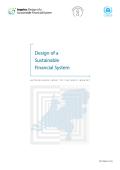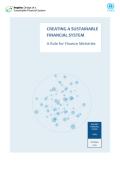Fiscal considerations may shift governmental priorities away from environmental concerns: finance ministers face strong demand for public expenditures such as infrastructure investments but they are constrained by international tax competition. We develop a multi-region model of tax competition and resource extraction to assess the fiscal incentive of imposing a tax on carbon rather than on capital. We explicitly model international capital and resource markets, as well as intertemporal capital accumulation and resource extraction. While fossil resources give rise to scarcity rents, capital does not. With carbon taxes, the rents can be captured and invested in infrastructure, which leads to higher welfare than under capital taxation. This result holds even without modeling environmental damages. It is robust under a variation of the behavioral assumptions of resource importers to coordinate their actions, and a resource exporter’s ability to counteract carbon policies. Further, no green paradox occurs—instead, the carbon tax constitutes a viable green policy, since it postpones extraction and reduces cumulative emissions.

This note summarizes the input provided to the UNEP Inquiry at a meeting with representatives from the Dutch financial sector ranging from public policymakers and regulators to the largest banks, asset managers, insurance companies and sustainable frontrunners. The policy recommendations include best practices, financial market policy and regulatory innovations to help bring about the green economy and a sustainable financial sector.

This paper investigates various roles that finance ministries can assume to promote those policies, regulations and standards which help to create a sustainable financial system. Finance ministries typically interact with the financial sector in many ways, from regulator and supervisory mandate setters to tax authority and sovereign debt issuers. All of these points of leverage empower them to play a key role in making financial systems sustainable.
Sustainability is not often regarded to be part of a finance ministry’s policy mandate. Therefore, this paper looks at cases where finance ministries use their mandates to bring about innovation in the space: Uganda, the Netherlands, the UK, South Africa, France and Germany. In conclusion, under the current mandates of finance ministries, much has already been done to begin creating significant openings that stimulate sustainability in the financial sector.
This report, led by the International Finance Corporation and the UNEP Inquiry into the Design of a Sustainable Financial System, aims to promote inclusive green investment in Kenya. It focuses on policy, structural, and investment innovations across the economy and financial sector that would increase capital flows that support sustainable development.
It looks at the main barriers to inclusive green investment and suggests options to promote inclusive green investment in Kenya, which include: developing cohesive, market-wide policy and regulation; effective enforcement of the market-led Sustainable Finance Principles in the banking; consolidating the pension and insurance sectors; providing structured market support to develop institutional investment vehicles; addressing gaps in existing environmental and social regulation; aligning foreign direct investment (FDI) objectives with the green growth agenda.
During the 2008 financial crisis, central banks deployed unconventional means to rescue failing banks and insulate economies from depression. Their asset purchases have had strong social impacts, but traditionally, central banks have not explicitly factored social objectives into their decisions or evaluated their impacts beyond the narrow monetary domain.
In this paper Andrew Sheng argues that central banks, when purchasing financial assets, should consider selecting assets that will promote sustainability, including climate change mitigation and adaptation. Social impact investing he argues is consistent with a central bank’s mandate to maintain price stability. They could incentivize bankers and asset managers to invest in, or lend to, climate mitigation activities and low-emission growth.
